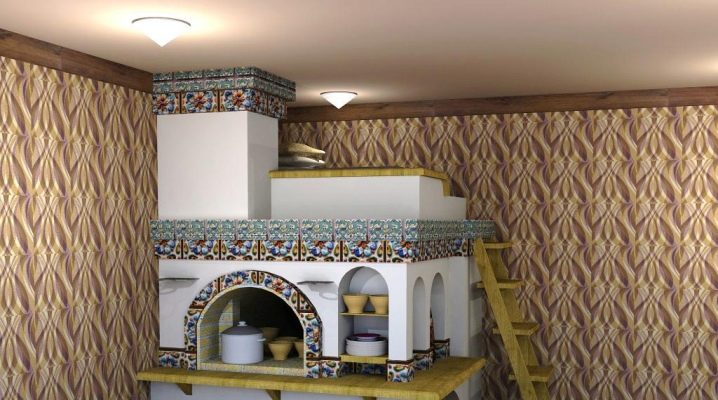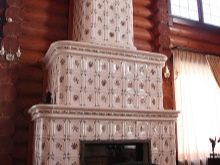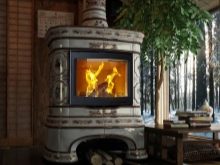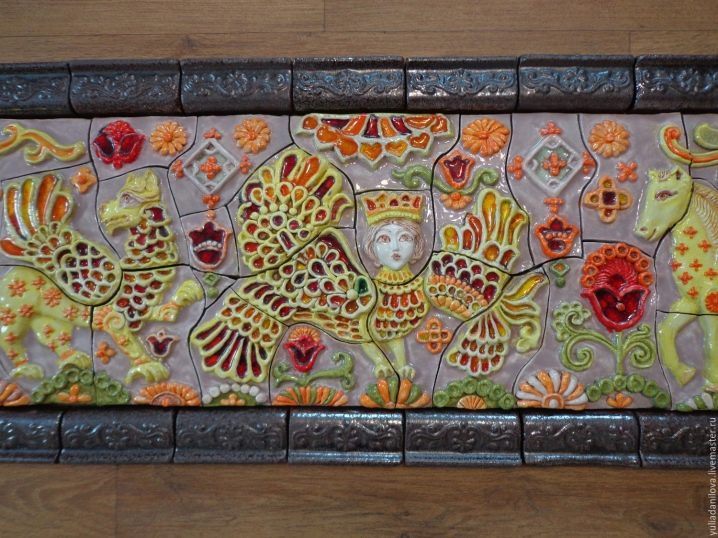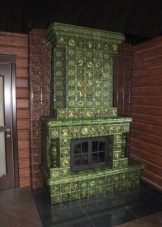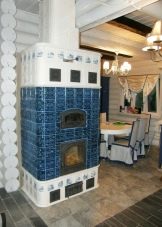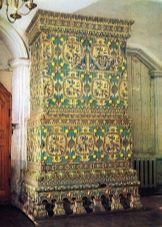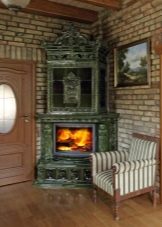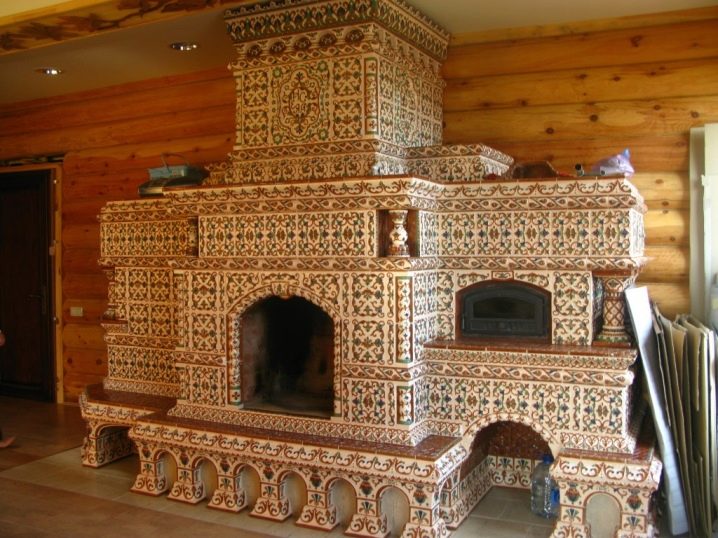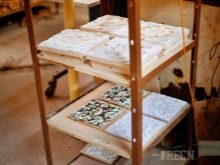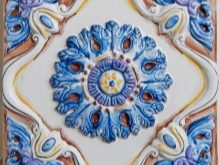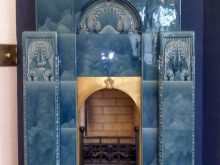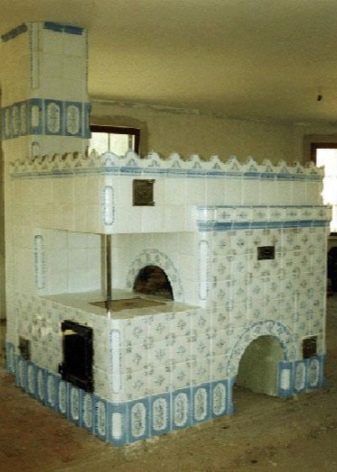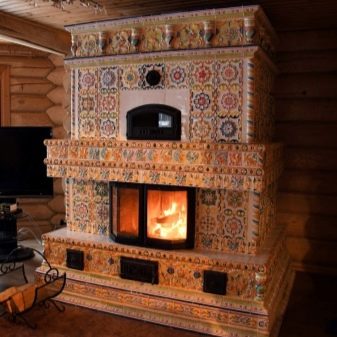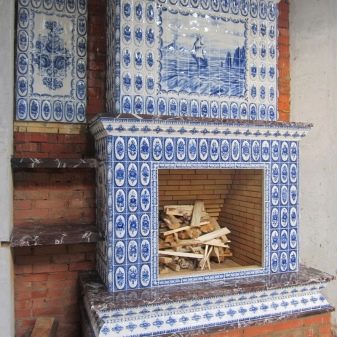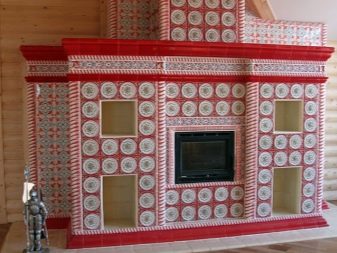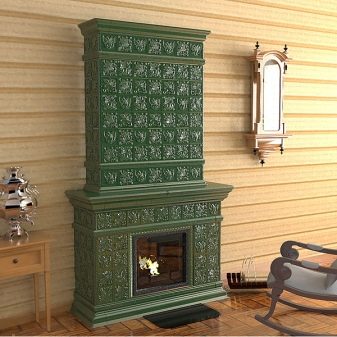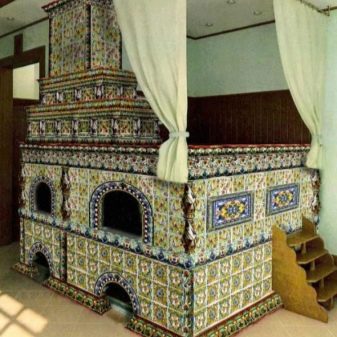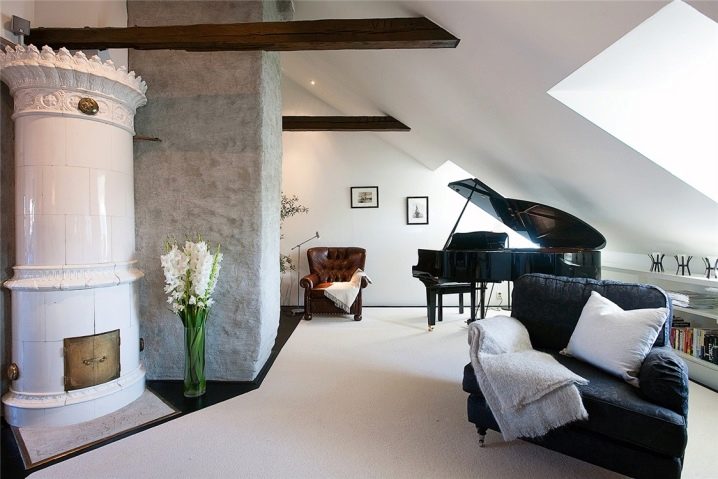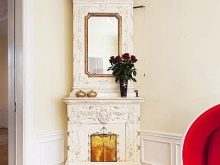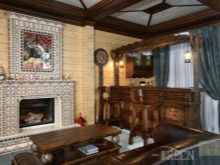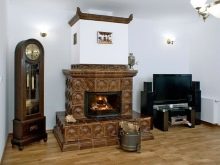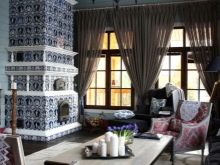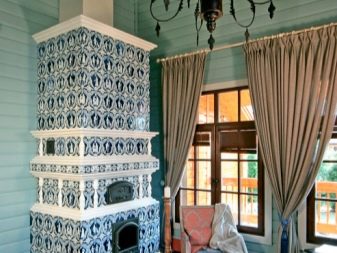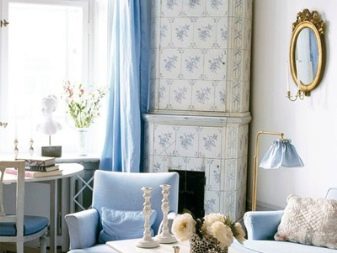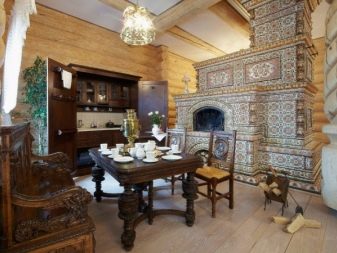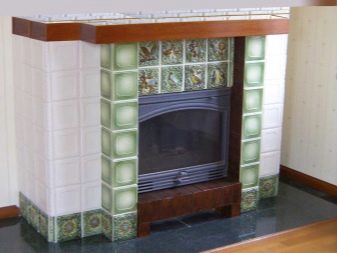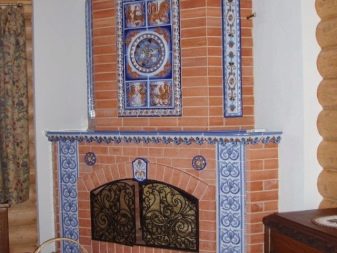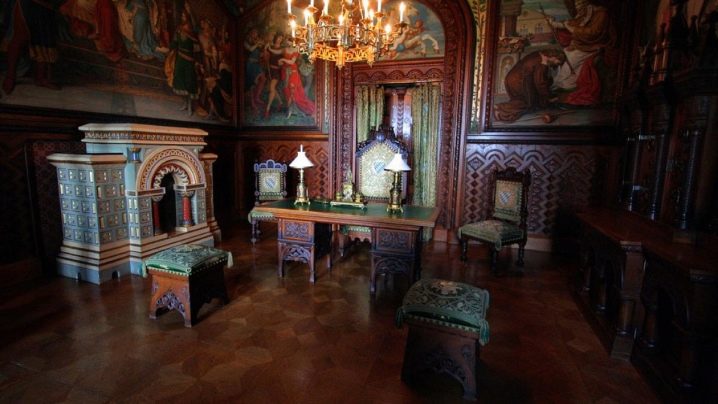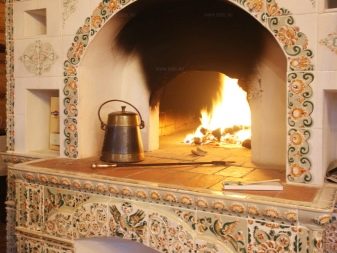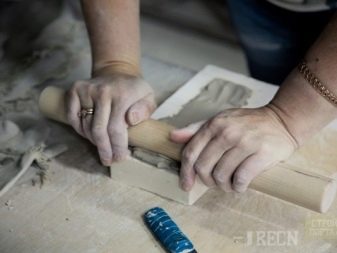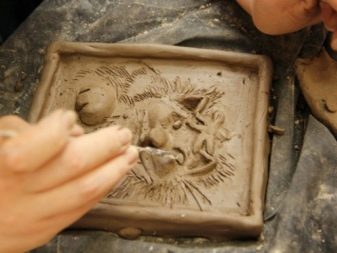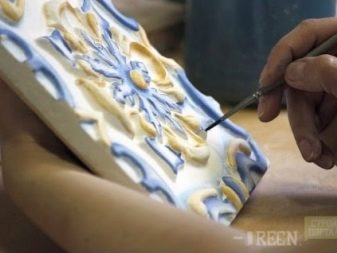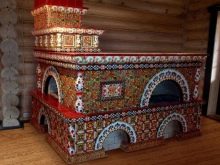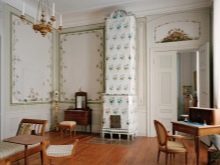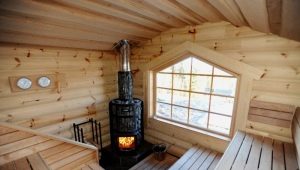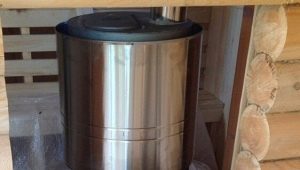Tiles for the stove: types and design
Tiles can be an excellent decoration for a stove or fireplace in a private house: modern design options allow you to fit these decorative tiles into any interior. If you are thinking about an interesting decor, you should definitely look at the tiles - the variety of models will surprise you. In addition, you can even make such jewelry with your own hands. In this article you will find detailed descriptions of different tiles and modern solutions for the interior.
What it is?
Tiles are called traditional decorative tiles made of clay, which decorated the furnace. Ancient art allowed to create unique colored tiles with a special technology that allows you to evenly distribute the heat of the furnace and slow down its cooling rate. Most often, tiles are painted and embossed ornaments, but you can find smooth models only with paintings or plain models with relief.
A room stove in a modern house, lined with tiles, can look stylish and interesting. A similar oven is also called Dutch. Now manufacturers offer tiles with the most unusual design: you can choose models with a traditional pattern or modern stylized products.
Tiles can veneer the entire furnace or combine them with ordinary ceramic tiles and bricks. The use of tiles in the decor has the following advantages:
- Such decoration will give your stove or fireplace a beautiful original look, which will allow you to diversify the interior. If it seems to you that the situation in the house is too simple and boring, decorative tiles will help to significantly diversify it.
- Usually, the stove is the semantic center of the room. In the interior design project, the semantic center should immediately stand out and attract attention. This effect will allow to achieve bright tiles.
- Most of these tiles are covered with glossy enamels or varnish. This is a very durable coating that will last a really long time.
- The glossy surface of the tiles will facilitate the cleaning of the room: dust on such tiles practically does not accumulate, unlike bricks, artificial stone or frosted ceramic tiles.
- Tiles are made according to a special technology, thanks to which they retain the heat of the furnace longer.
Special features
Despite the fact that decorative traditional tiles used to be made by hand, now most of them are made on machine production, and handmade models can only be purchased in separate workshops at fairly high prices. However, tiles differ from ordinary tiles. They have the following special features:
- Tile size is smaller than standard tile size. Traditionally, the tiles were smaller by about 2/3 and were slightly elongated. Now, many models are made in size 1/4 of ordinary ceramic tiles, so that these products can be easily combined when finishing. However, there are also tiles of various shapes and sizes, which are folded into a mosaic.
- Usually tiles have a relief. Often it is located in the same relief frame on the tile. This decor creates the impression of a small picture on each tile.
- Tiles are a bright element of decor.. Modern kits often combine variegated painted versions and more restrained products, so as not to overload the design of the furnace.But if you decorate a room in traditional Russian style, flashy elements across the surface may also be appropriate.
Air gap
All traditional tiles have a rumpa - a recess on the reverse side, resembling a rectangular bowl made of the same ceramic. Such indentations in each tile allow you to create an air gap between the stove itself and the outer surface of the tile. Due to the accumulation of air, such a furnace will stay hot longer and release heat. In addition, the air allows for the most uniform heating.
Most modern tiles also have a similar rump and, if you choose a lining for the stove, it is worth considering such products.
Kinds
Kiln tiles can be very diverse: with a simple pattern or complex painting, round or rectangular. If you are going to decorate your hearth with them, you should first of all decide on the desired design. Consider the following possible options for traditional painting:
- Russian traditional tiles contain mostly floral and floral ornaments.. Nowadays, products painted under Khokhloma are popular, although this color scheme was more characteristic of wooden utensils. Khokhloma can successfully fit into the Russian style in the interior, and it can also become an interesting accent in an eclectic and even in a modern interior. If you combine such tiles for the fireplace with elements of high-tech style, you can create a very unusual design.
- For the Russian stove, tiles with Gzhel decor were typical; these are white relief tiles with simple blue ornaments.. Such lining will also look great in almost any type of interior. Moreover, it is Gzhel, thanks to its exquisite laconic design, that fits perfectly even into classical style and baroque. The plots depicted in the pictures of similar products are very diverse: they can be not only flowers, but also birds, houses, landscapes and images of people. Gzhel is often used in combination with ordinary tile - angular tiles may be suitable for this.
- Dutch tiles also have a white and blue color scheme.. At the same time, such tiles are notable for complex painting - they depict not just simple ornaments, but whole scenes from everyday life, written with a thin brush.Such tiles are made absolutely smooth, so that nothing distracts the viewer from painting. Very often on the Dutch tiles depict the sea and ships, domestic animals, peasants at work or knights. Such tiles fit the Scandinavian style in the best way possible.
- Tiles with Italian decor iced very selectively. - Often on them intentionally leave the raw areas of red clay. The rest of the colors are predominantly warm - olive, yellow, red and bright blue tones are typical. Patterns on Italian tiles are usually very minimalist: often in the center is simply a large flower. However, you can also find more unusual options - for example, images of branches with fruits or portraits of people in national costumes.
- English Design Tiles suitable for classical and neoclassical style. These are rather restrained tiles - the main color is white, and the painting may include brown, terracotta and blue colors. Most often it is a smooth model, but sometimes you can find products with a slight relief. Rural landscapes are most often depicted on such tiles.
- For facing cast iron stove, you can use tiles with an oriental design. The color spectrum is restrained and mostly dark: emerald green, blue and brown are widely used. At the same time, such products are distinguished by complex relief and unexpected plots. Very often depicted scenes of war and hunting, and you can also find a variety of products with mythical creatures. Such unusual tiles can be an unusual element of decor in any interior.
Design
Now tiles are finished with stoves in private houses or in the country, as well as decorative electric fireplaces in apartments. It is very important that the tiles harmoniously fit into the design of the entire room. The easiest way to do this is if you equip a new home and think through the entire design project. If you have already finished and furnished the room, and then decided to tile the fireplace with tiles, it will be more difficult to choose suitable options.
It is necessary to take into account many factors: the size and layout of the room, the color range of finishes, the material of furniture and accessories.
Sometimes private houses have several rooms, and sometimes they are open spaces without physical boundaries,divided only visually. Anyway, the size of the room where your stove or fireplace is located is very important. If the room is small, it is recommended to mainly choose light tiles that are slightly different in tone.
If the room is spacious, you can also choose dark and bright options or play on contrasts, combining several rich colors.
Whatever decoration you do in your home, room or apartment, it is important to remember that decoration is the basis of your interior design, and the stove is the most prominent detail. In the event that you have chosen a simple finish, for example, painting walls or brickwork, almost any tiles will look organic as a stove lining due to the presence of painting. If you have bright interesting wallpapers, the tiles should contrast with them and stand out against their background.
Speaking of various materials, decorative ceramic tiles, covered with glossy glaze, perfectly combined with almost any other textures. In the interior with them you can use the most different natural, painted or varnished wood, brick and stone, metal coatings, glass, textiles and plastic.However, you should not combine all these materials at once, especially if you have a small room. As the main options it is better to choose two or three materials.
Besides, keep in mind that if you choose motley visible tiles, you should not combine them with stained glass windows or carved wood. Furniture and decoration should be restrained enough not to compete with the decor of the stove, but only emphasize it.
If you have a fairly modern interior, and you are not sure that the kiln-finished stove harmoniously fits into it, it may be worth maintaining an extravagant decor and other similar decorations in the interior.
For example, you can place several tiles on a window or in a kitchen zone. This will bring a single ensemble to the whole room. In addition, you can diversify the interior with other accessories, for example, place ceramic vases on the open shelves or utensils to match the color of your decorative tiles on the stove.
Manufacturing technology
Despite the fact that now tiles are often made in factories by machine, initially traditional decorative tiles for the furnace were made by hand.In addition, they are easy to do with your own hands - for this you only need clay, clay, gypsum and glazes, which are sold in art stores and hypermarkets for hobbies and creativity. The only problem is firing, since this requires a muffle stove with high temperatures. However, now almost in every city there are workshops that provide the service of roasting products.
Tile manufacturing technology is as follows:
- First, the desired option must be molded from sculptural clay. It is dense enough and will keep its shape well. To give the tile the desired size, use the ruler.
- You need to find any small plastic form or tight box, pour plaster into it, and then place your tile in it and wait for it to dry.
- After that, the clay is removed from the plaster form.
- Instead of clay, clay is placed in the mold to give it the necessary shape. Using this form, you can make many identical tiles: just put the clay in the mold, wait for it to dry in the air, remove the tile and put the new clay in the shape again.
- Do not forget to fashion a tiller on the back of each tile to create an air gap and attach it to the furnace.
- Finished products need to burn.
- Burnt products covered with colored glazes. You can use any colors that suit your interior.
- After painting products are ready. It remains to lay them in the desired sequence and revet the facade of the furnace with them.
Beautiful examples in the interior
If you are thinking about the decor of the stove using tiles, it is important to choose the most successful solution for your interior. Consider the following real décor examples that can inspire you to your own design project:
- The traditional stove with a stove bench in the Russian style can be perfectly combined with wood in the interior. Very often, bright tiles are used in the interior of wooden houses from a bar. Due to the simplicity of finishing the floor and walls, the stove, fully lined with flashy tiles, looks particularly elegant and distinctive.
- For the decor of the fireplace in the neoclassical interior, you can use stylish and discreet English tiles. They will exquisitely emphasize your hearth and will not be in conflict with the rest of the interior.
- For modern furnishings, oriental tiles with intricate patterns can perfectly suit. They will certainly become the highlight of this interior.
In the video below, see the process of decorating the furnace with tiles.
